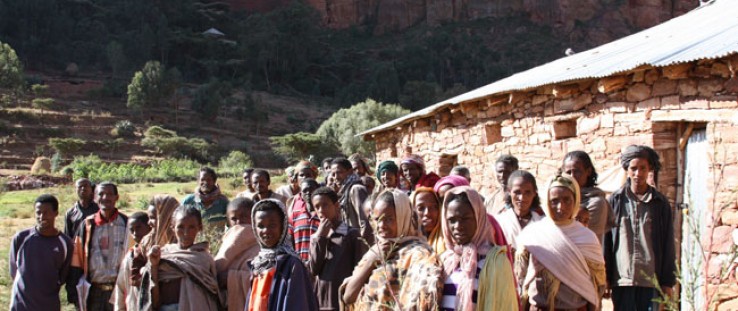 In 2009, the isolated Tabia Debre Abay community built this Alternative Basic Education Center in Tigray, Ethiopia, with USAID support. The community is now actively involved in the education of their youngsters.
Nena Terrell, USAID
In 2009, the isolated Tabia Debre Abay community built this Alternative Basic Education Center in Tigray, Ethiopia, with USAID support. The community is now actively involved in the education of their youngsters.
Nena Terrell, USAID
 In 2009, the isolated Tabia Debre Abay community built this Alternative Basic Education Center in Tigray, Ethiopia, with USAID support. The community is now actively involved in the education of their youngsters.
Nena Terrell, USAID
In 2009, the isolated Tabia Debre Abay community built this Alternative Basic Education Center in Tigray, Ethiopia, with USAID support. The community is now actively involved in the education of their youngsters.
Nena Terrell, USAID
In Ethiopia, as in much of sub-Saharan Africa, pens are a treasured commodity. Give a child a pen and you will see a smile worth all the Western world’s Christmas mornings.
Yet lack of basic school supplies just begins to scratch the surface of the country’s educational woes. Historically, most Ethiopians have not had formal schooling. Twenty million youth and 30 million adults have not been taught basic skills.
While huge advances have been made in recent years in getting students into classrooms, literacy remains abysmally low due primarily to poor teaching and lack of materials. Dropout rates are on the rise. Only a quarter of the country’s boys and less than 20 percent of its girls continue to study beyond primary school. But at least, some argue, these children have schools to attend.
Over four-fifths of Ethiopia is rural, but some parts are so sparsely populated they fail to qualify as dots on a map. For the kids living far off the grid, a several-hours hike to the nearest state-sponsored school is often the only option. Not surprisingly, many forgo it. Five-to-8-year-old legs are not made for that kind of daily round-trip journey, nor is it a safe or reasonable option.
This lack of access to basic education can be an added stress on poor, rural parents—those subsistence farmers already struggling under the combined yokes of poverty, food insecurity and a cruel, whimsical climate.
If education is, in fact, the path towards greater economic growth, as Organization for Economic Cooperation and Development studies have shown, these unreachable kids need a clearer shot at breaking the vicious poverty cycle.
Says Allyson Wainer, the Agency’s education officer in Ethiopia, “Reaching the most remote areas of the country with education that is both relevant and of high quality will have a great impact on improving the livelihoods of families in these areas.”
Filling the Void
In 2002, USAID began a program to help the Ethiopian Ministry of Education fill the void where the government was unable to provide official basic education and where formal education was not necessarily relevant. The pilot brought improvised schools to about 350 out-of-school children in off-the-beaten-path communities in SNNPR (Southern Nations, Nationalities, and People’s Region) that had never had them. Since then, the program has grown to cover around a quarter of a million of these children in underserved areas. The Government of Ethiopia has adopted both the model and the curriculum, and is reaching millions of children with the USAID-piloted model.
The schools, known officially as Alternative Basic Education Centers, or ABECs, are built by community members on communal land with materials funded by USAID. They are managed by villagers via elected community committees and usually include elders, women, and those with some level of education. USAID, through its partners PACT and, in Tigray, Relief Society of Tigray (REST), provides the committee members with training so they can effectively manage the ABECs.
Committees also identify the best candidates for teachers, who come from the community. As part of the program, USAID provides the teachers with intensive training, pays the salaries of teachers and supervisors, and supplies learning materials in collaboration with local education offices.
The model was intended to ensure that entire communities were invested in the education of their young people.
Related Content
In the Debre Abay ABEC, in the arid northern Tigray region, the model appears to be working. On a Thursday morning in December 2011, scores of villagers mill around the school, periodically checking in on a building holding three classrooms built by the community over a two-month period in 2009. Debre Abay is a 10-minute walk along a cactus-dotted gorge from the nearest point a vehicle can reach. The closest government school is two hours away on foot.
Inside one of the classrooms, around 40 third-graders sit in clusters atop clay-colored rocks arranged to provide relatively flat sitting areas. All are barefoot and a few scribble with twisted ink cartridges pilfered from the long-gone plastic shells. They seem eager to learn, their hands flashing up into frantic finger snapping when the teacher asks a question they know. Letay Gebremariam is the 23-year-old facilitator (or teacher) at Debre Abay. An ABEC curriculum includes specially designed courses in literacy, English, environmental science, health, agriculture, history, geography and math, which are taught using examples and topics that are relevant to the lives of families in the peripheral areas of Ethiopia.
Gebremariam grew up in the community and remembers the grueling round trips to school that she made each day for eight years. To continue her education after the eighth grade, she had to rent a room in the nearest town. “It was hard. I used to walk four hours. I used to be tired,” she recalls of her primary education.
Gebremariam considers it crucial that students who follow in her footsteps have it easier. “If there wasn’t a school nearby, these kids wouldn’t come to school,” she says. In all, 121 children, grades one through four, call this basic concrete structure school. Around half are girls.
Facilitators, who are chosen by the committees based on their knowledge of both the language and culture of the community, must have a minimum of a 10th grade education. They receive intensive short-term professional training to become certified to begin teaching at the ABEC.
According to USAID’s Wainer, one of the best things about ABECs is that the teachers come from the community and are keenly aware of the culture, language and way of living for students and families. The program pays their monthly salary and they are granted a scholarship to continue their professional training during the summer in one of the teacher training colleges. Upon the program’s completion, USAID hands over both the ABECs and the teachers to the local government for conversion to formal schools, at which point the facilitators are recognized as teachers and join the payrolls of the Ministry of Education.
USAID has handed over 550 centers, which have all expanded to operate as full-fledged formal primary schools. Currently, 301 centers are being managed by USAID and partners, and will be handed over by the project’s end in August 2014.
Intense Community Involvement
Built on the low-lying communal land central to where offshoots of families often live and farm high in the surrounding hills, ABEC education is anchored in intense community involvement. Hailesellassie Teklehaimanot, a father of seven, is a community mobilizer in the Debre Abay area. He is a subsistence farmer by day, but his volunteer role is to preach the power of education to his neighbors. He regrets not having gone to school past the seventh grade. “I never had this opportunity,” he says.
Falling within the country’s poorest 10 percent—those that receive food and cash in exchange for work as part of Africa’s largest social safety net program —Teklehaimanot sees education as the best way for his children to forge a better future.
“As you can see, our place is very rugged,” he explains. “In most cases, we can’t support our families. I wish for my kids to engage fully in the education system – especially the girls.” In Ethiopia, girls’ educational performance is not on par with that of boys. In 2011, the gross enrollment of girls in primary school was 93.2 percent, while that of boys was 99.5 percent. Girls also repeat more than boys. The gender gap in enrollment and repetition rates is wider in rural areas.
“USAID continues to place a special emphasis on girls’ education and on creating female leadership in the education sector,” says Wainer.
Trekking at 10
In Debre Abay, alternative education ends at the fourth grade—children must walk the two hours to the official school to continue learning in grade 5. Not surprisingly, some still drop out, mainly for poverty-related reasons, including the families’ need for their children’s labor or their inability to pay for room and board near the schools. If all goes according to plan, though, the Debre Abay ABEC will convert into a formal government-sponsored school after two years and will expand to a complete primary school (grades 1-8) as resources from the community and local government allow.
USAID Mission Director Tom Staal explains the process which allows such an easy hand-off: “USAID links the school management committee to the local education office right from the start. The local government has five years to plan on putting the new school and the teachers into their budget, so it is always a success.”
He says the program also complements the Agency’s basic education strategy, “which is to focus on the quality of teaching and learning outcomes for early grade reading, and which our assessments show, is extremely low in the country’s 27,000 primary schools.”
Back in Debre Abay, Teklehaimanot is desperately hoping this formal conversion will happen sooner rather than later. “I’m hoping in the future the school will be extended ... so my 10-year-old can stay here,” the concerned father says.
Until then, the community can take solace in one thing: Those graduated ABEC students who continue their educations in town are performing well with their peers from the formal school system, sometimes even outperforming them. Additionally, over 95 percent of the kids from ABECs continue their education in the formal government schools.
“At the start, the government was wary of the ABEC program,” explains Staal. “They said, ‘These aren’t real schools, why should we support this?’ And we said, ‘Let us just try some.’ And we did it in 550 centers. The kids in those centers ended up succeeding in completing first-cycle primary grades (grades 1-4) in just a three-year period. This happened because education in ABECs is both intensive, relevant to communities’ needs and closely supported and managed by community-elected committees.”
Staal says that the reason for the program’s success is two-fold. Support from USAID and other donors plays a large role. Aside from providing the school-building materials, the Agency also provides text books, pays teachers, assigns education supervisors who closely look after the program, and builds the capacity of committees to manage the program from the community side. But also, he explains, the education-starved communities fully embrace the new opportunity. “These are communities that never had any kind of school whatsoever. And they are extremely eager to have it. So there’s a much stronger commitment from the community. And you put the two together, and that’s what you come up with.”
This article originally appeared in May 2012







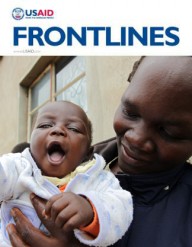

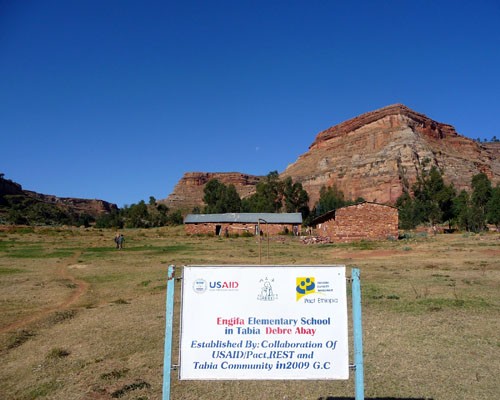
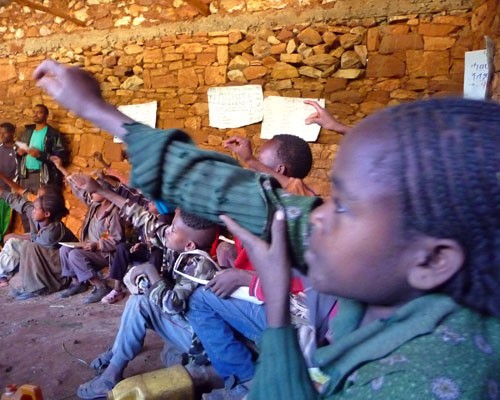
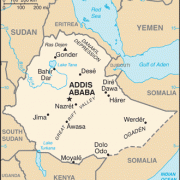

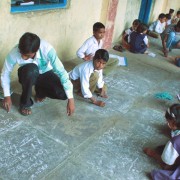
Comment
Make a general inquiry or suggest an improvement.